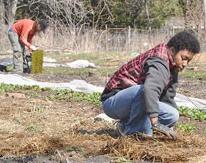
How Sustainable Activism Transformed Detroit
After the death throes of urban decay, what the Motor City can teach us about vision, community, and the power of movements.

After the death throes of urban decay, what the Motor City can teach us about vision, community, and the power of movements.

“My papa settled here in 1944,” Pablo Sarmiento says in a serene voice and gentle manner, as he looks at the ruins of his home that was torn down by a multinational’s bulldozers.

Source: The New Statesman
Experts predict that there will be ten billion of us by 2100. Feeding the world could be the political challenge of the century.
How will we eat in the future? By 2100, the world’s population is projected to reach ten billion. The highest levels of consumption will be in Europe and North America, most people will live in Asia and the highest population growth rates in Africa – where the population could triple over the next 90 years. If tomorrow augurs ill, today is already pretty dire. The global recession has lowered incomes, raised food prices and pushed the number of hungry people to one billion.

Source: Al Jazeera
Climate change induced extreme weather events and shifting weather patterns are challenging farmer’s ability to feed us.
Wendy Johnston with Oakwyn Farms in Athens, West Virginia, is deeply concerned about how shifting weather patterns are impacting farmers’ ability to feed the global population.
“This year we’re off to a slow start,” Johnston, who farms 40 hectares, told Al Jazeera. “Last year in April we were able to plant, but this year we even had rain, cold and snow a few days in April. The weather has become very unpredictable, and that’s the real problem.”
Copyright Toward Freedom 2019